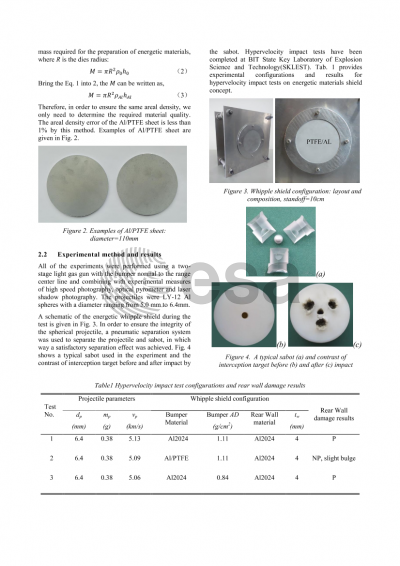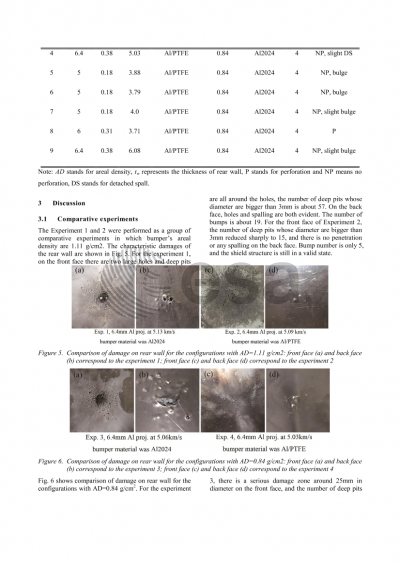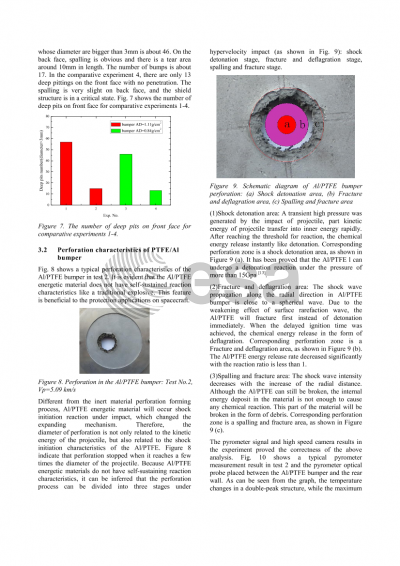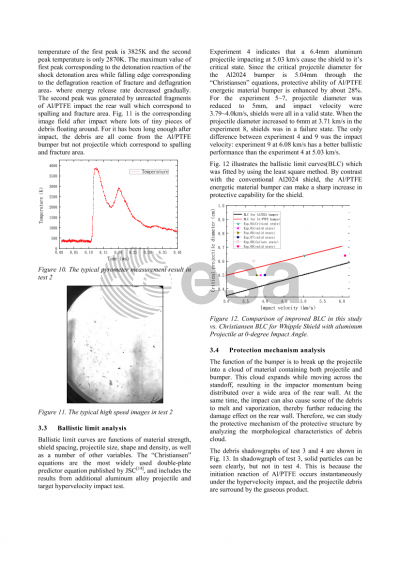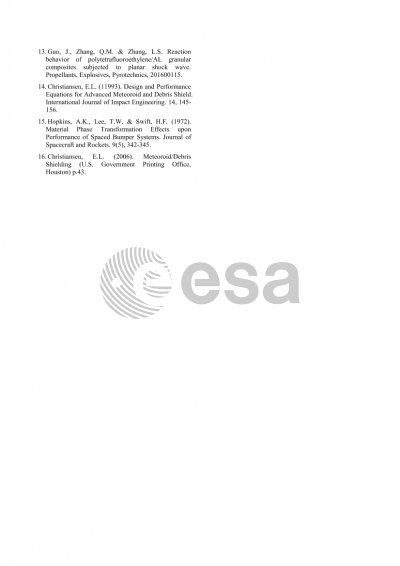Document details

Abstract
In this paper, a new concept space shield structure, namely impact-initiated energetic material reinforced whipple shield structure, is proposed. A series of experiments have been performed on this new whipple shield structure which consists of an Al/PTFE (polytetrafluoroethylene) bumper and an LY12 Al rear wall using two-stage light gas gun at velocities between 2.31 and 6.08km/s, combined with experimental measures of high speed photography, optical pyrometer and laser shadow photography. Damages including penetration hole in the front bumper and craters on the rear wall have been studied. A non-dimensional empirical expression for perforation diameter of the PTFE/Al bumper was established by dimensional analysis, while ballistic limit curve for the new material shield was achieved. It is found that the protective capability of whipple shield was improved by replacing LY12 Al bumper with Al/PTFE bumper, which have the same areal density. At the experimental velocities, the results showed that the critical projectile diameter can increase of 20.5%-45%. In order to investigate the impact processes on Al/PTFE energetic material shield and reveal the new concept shield’s protective mechanism, a simulation programme was defined using the hydrocodes AUTODYN. 2D axisymmetric simulations were carried out and compared with the experimental results. Good agreement was obtained and the material parameters were verified. The experiment and simulation analysis suggest that shock initiation characteristics of energetic material under impact enhanced the debris shield performance. When impacted by the space debris, energetic material shield firstly uses its mechanical strength for primary crushing. During this process, the energetic material shield has an explosive reaction with an instantaneous temperature being as high as 3800K, which can promote fragmentation, melt and reduce the size of the space debris. At the same time, the explosion products with high temperature, pressure and high speed motion produce a negative acceleration to the projectile fragments, reducing the axial kinetic energy. Moreover, for the explosion products are almost gaseous state, the debris cloud only include projectile material in solid. PTFE/Al energetic material shield can make the space debris fully fractured and slowed down due to the combined effect of impact and explosion, thereby producing a sharp rise in the spacecraft protection ability.
Preview

